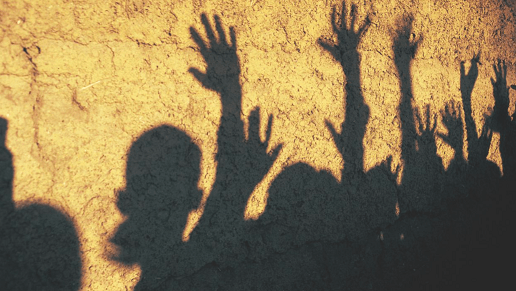Can we “orange the world” of a humanitarian crisis?
10 December 2021On the occasion of the 16 days of activism, the world turned orange to raise awareness on sexual gender-based violence (SGBV). Today, Human Rights Day marks its final day. Now what?

Being safe from violence is a fundamental right of us all. Unfortunately, at least 35 per cent of girls and women worldwide are denied of this right. The picture gets even worse when looking at the humanitarian context – there, the number of girls and women experiencing violence jumps to 70 per cent.
When it comes to legal protection, there are many agreements in place, such as the Option Protocol of Children in Armed Conflict. Evidence shows, however, that we are not nearly close to where we should be, especially considering how under-reported SGBV cases are. For instance, the widespread stigma around rape and sexual violence lets too many cases be unseen and forgotten.
If we want to do better, we need to be honest about the facts. For one, we cannot ignore the gender aspect of it. Sexual violence disproportionately affects girls, who were victims in 97 per cent of cases from 2016 to 2020. Moreover, we must fully understand how SGBV affects different people differently. While children, for instance, are rights holders, they do not have the same level of autonomy or legal authority to make decisions about their lives as adults do.
It is only expected, then, that for girls the situation is even worse as they are often being socialised to obey and hold an even smaller degree of autonomy and decision-making. This makes the fight against SGBV and violence against children (VAC) even more challenging.
So how do we move forward?
During a recent intervention in an event organised by the European Commission’s DG ECHO, I had the opportunity to discuss exactly this with our European institutions and peers from civil society. Here are some of the take-aways.
Developing programmes that are fit for purpose
SGBV programmes preventing and responding to harm must be comprehensive and ensure that it includes all children and youth. We must adopt a survivor-centred approach, with the best interests of the child or young person at its core. We need an intersectional approach that allows us to understand all interconnecting aspects of a crisis and all different forms of violence.
Identifying the unique needs of survivors
Following on the concept of intersectionality, child and adolescent survivors have unique needs and face specific risks due to their age, gender, and other factors. GBV programs designed for women cannot always meet the specific needs of young children or adolescents. Staff working with child and adolescent survivors need to have skills to ensure age and gender-sensitive responses, address their unique needs, and work with their caregivers and communities to safeguard their healing and recovery.
Fighting the root, not just the symptoms
Most importantly, we need a gender-transformative approach addressing the harmful gender norms that drive GBV. In other words, we need to challenge the root causes of violence rather than just its symptoms. Such an approach must follow the entire life-course of a person, consider them in all their diversity and various identities, and work with girls and young women to strengthen their agency, improving their conditions and social positions. Boys and men are also crucial in this as, by embracing positive masculinities, they can be true gender equality allies. Lastly, such an approach must foster an enabling environment where we can all work together to support children and youth.
Ensuring IHL is there for children
The EU and the international community must ensure the full respect of International Humanitarian Law (IHL). Particular emphasis should be given in guaranteeing safe and unimpeded delivery of humanitarian assistance, as well as pursuing accountability for perpetrators, such as those who target schools, kill and maim students and teachers, and abduct girls.
The 16 days of activism are a reminder for us to do better. To act better. Because we can colour all the buildings in the world orange, but it will not be enough if not followed by meaningful action.
These days of activism have once again shown that the evidence exists in multitudes: we have told the stories, published the reports and put down the stepping stones that only need to be walked. What we need now, is the political will to take responsibility. Only then, we might turn an orange world into a safe and inclusive world for everyone.
Children and adolescent girls deserve to survive, recover, and have their youth full of safety, stability, and hope. They will one day lead our world. We must not fail them.
Categories: Emergencies


